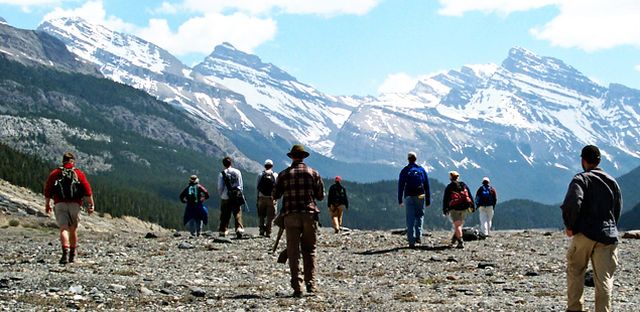
Geology Faculty Publications
Document Type
Article
Publication Date
2014
Publication Source
Estonian Journal of Earth Sciences
Abstract
Reconstruction of the Hirnantian (Late Ordovician) palaeotopography in South China is important for understanding the distribution pattern of the Hirnantian marine depositional environment. In this study, we reconstructed the Hirnantian palaeotopography in the Upper Yangtze region based on the rankings of the palaeo-water depths, which were inferred according to the lithofacies and biofacies characteristics of the sections. Data from 374 Hirnantian sections were collected and standardized through the online Geobiodiversity Database. The Ordinary Kriging interpolation method in the ArcGIS software was applied to create the continuous surface of the palaeo-water depths, i.e. the Hirnantian palaeotopography. Meanwhile, the line transect analysis was used to further observe the terrain changes along two given directions.
The reconstructed palaeotopographic map shows a relatively flat and shallow epicontinental sea with three local depressions and a submarine high on the Upper Yangtze region during the Hirnantian. The water depth is mostly less than 60 m and the Yangtze Sea gradually deepens towards the north.
Inclusive pages
329-334
ISBN/ISSN
1736-4728
Document Version
Published Version
Copyright
Copyright © 2014, Estonian Academy Publishers
Publisher
Estonian Academy Publishers
Volume
63
Issue
4
Peer Reviewed
yes
eCommons Citation
Zhang, Linna; Fan, Junxuan; Chen, Qing; and Wu, Shuang-Ye, "Reconstruction of the Hirnantian (Late Ordovician) Palaeotopography in the Upper Yangtze Region" (2014). Geology Faculty Publications. 42.
https://ecommons.udayton.edu/geo_fac_pub/42
Included in
Geology Commons, Geomorphology Commons, Geophysics and Seismology Commons, Glaciology Commons, Hydrology Commons, Other Environmental Sciences Commons, Paleontology Commons, Sedimentology Commons, Soil Science Commons, Stratigraphy Commons, Tectonics and Structure Commons



Comments
This document is provided for download in compliance with the publisher's open-access policy. Permission documentation is on file.